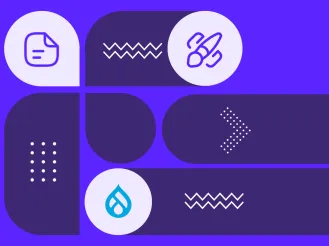Your Website, but Better: A (Realistic) Guide to Personalizing for Prospective Students
Ever browse Netflix and wonder how it knew you desperately needed a feel-good comedy after a rough week? Or how Amazon somehow suggests the exact kitchen gadget you never knew you needed? That's website personalization at play—and prospective students today expect a similar digital experience when exploring universities. But before you panic and picture a future filled with tech jargon and expensive solutions, take a breath. Personalization isn't magic; it's strategy. And you, dear marketer, are already halfway there by just reading this.
Why Higher Education Marketing Can't Ignore Personalization Anymore
Here's the blunt truth: prospective students, especially Gen Z digital natives, won't settle for generic experiences. They're accustomed to personalized user experiences everywhere else online, so why should your higher education website feel like it's stuck in 2005?
Moreover, competition in higher ed is fierce. Institutions battling shrinking enrollment numbers can't afford to offer cookie-cutter content. Website personalization isn't just nice-to-have; it's become essential. Schools leveraging tailored content often see increased student engagement, higher conversion rates, and, ultimately, better enrollment outcomes.
Decoding Website Personalization: Not All Personalization is Created Equal
Let's keep it simple—personalization comes down to three main flavors:
Behavioral Personalization
Think Netflix again. If a student searches for fine arts, why not show them related programs, student clubs, and alumni stories? That’s behavioral personalization. You don't even need to stalk them digitally—just personalize their next click based on the first page they land on.
Contextual Personalization
Easy wins here! Think language selection, geographic location, or timely events like application deadlines. If someone lands on your admissions page from abroad, serving them international student info rather than local commuter options makes perfect sense. This type of contextual personalization is straightforward and highly effective.
Demographic Personalization
Age, academic interests, undergraduate versus postgraduate—serving up content tailored to undergraduates, graduates, international, or local students is like giving them their own tailored campus tour online. But remember: tread carefully here to avoid the creepiness factor. This demographic personalization should be used thoughtfully and strategically.
The Case for Self-Serve Personalization (Or: Choose Your Own Adventure)
One underrated trick in higher education marketing? Empower students with self-service tools. Prospective students love autonomy. Give them interactive tools, and they'll thank you for it (well, indirectly, through higher engagement):
- Interactive tuition calculators.
- Dynamic FAQs based on visitor inputs.
- Customized digital viewbooks.
- Course finders based on student interests and desired careers.
These tools empower students, reduce confusion, and provide the satisfaction of a tailored experience—without stalking their every digital move. Personalization doesn't always mean expensive software. It can start simply, by letting students choose pathways like domestic vs. international, undergraduate vs. postgraduate, and shaping their journey accordingly.
Using First-Party Data: Your Secret Sauce for Meaningful Personalization
First-party data is your personalization fuel. You may not be Netflix, but you do have valuable data—leverage it wisely:
- Track content preferences, inquiries, and form interactions.
- Use chatbots and surveys to collect student interests without crossing user privacy boundaries.
- Tailor follow-up communications based on what they've explored on your site.
Simple actions, like remembering a student's preferred program or visited pages, can transform their next interaction from forgettable to memorable. Effective data-driven marketing can begin here—by remembering a student’s preferred program or visited pages.
Real Talk: Successful Website Personalization in the Wild
Reality check: full-scale, tech-heavy personalization might sound appealing but is often unrealistic for many higher ed institutions. Personalization efforts often fizzle out because of resource constraints and lack of clarity. Many universities lack dedicated teams, sufficient data, or clearly defined goals. Most don't even truly understand their audience's online behaviors yet.
But don’t despair—just knowing this puts you ahead. Start by identifying manageable objectives and specific audience segments. Small wins abound:
- Geolocation-driven content language options.
- Displaying recently viewed programs or pages.
- Consistent user journey mapping for segments like international vs. domestic students.
These might seem modest, but they're impactful, realistic starting points that notably enhance user experiences.
Navigating the Pitfalls (Without Falling In)
Personalization isn’t without hazards:
- Privacy Compliance: GDPR compliance and FERPA aren't suggestions; they're mandatory. Use clear cookie policies and transparent data practices.
- Avoiding the Creepy Factor: Subtlety is key. "Welcome back! Here's your last viewed program" feels helpful. "Hey Dave, did you enjoy your breakfast?"—not so much.
- Quality Data Management: Garbage data in equals garbage personalization out. Ensure your backend can handle clean, actionable data, and consider mapping out your content governance ahead of starting.
Practical Steps: Getting Started Without Breaking a Sweat
Here’s your "no-panic" game plan for immediate results:
- Clarify your goals: Enrollment, retention, alumni engagement—decide what's critical.
- Identify easy wins: Start with content personalization basics like language or geolocation.
- Collaborate smartly: Clearly communicate your goals to IT, admissions, and digital marketing teams.
- Choose the right tools: Consider built-in CMS solutions or simpler A/B testing platforms like Google Optimize for easy conversion optimization.
- Measure thoughtfully: Track meaningful metrics like inquiry forms completed, "apply" clicks, and user engagement.
Metrics That Matter
Success isn't measured in vanity metrics. Focus on actionable outcomes:
- Inquiries and applications initiated, like clicks on “apply”, “inquire”, or “donate”.
- User engagement metrics like time-on-site and return visits.
- Reduced bounce rates on personalized pages and increased content consumption.
Bringing It Home
Website personalization isn't an all-or-nothing gamble. It's about smart, strategic steps tailored to your resources and objectives. Begin with realistic goals, experiment wisely, and continuously refine your approach. And remember: even small steps towards personalization can dramatically enhance the experience for prospective students.
Feeling ready to dive deeper or need guidance through the maze of personalization? We've got your back. And who knows? With a little creativity and some solid strategy, maybe soon you'll be the Netflix of higher-ed websites—delighting prospective students, one tailored experience at a time.
Contributors





